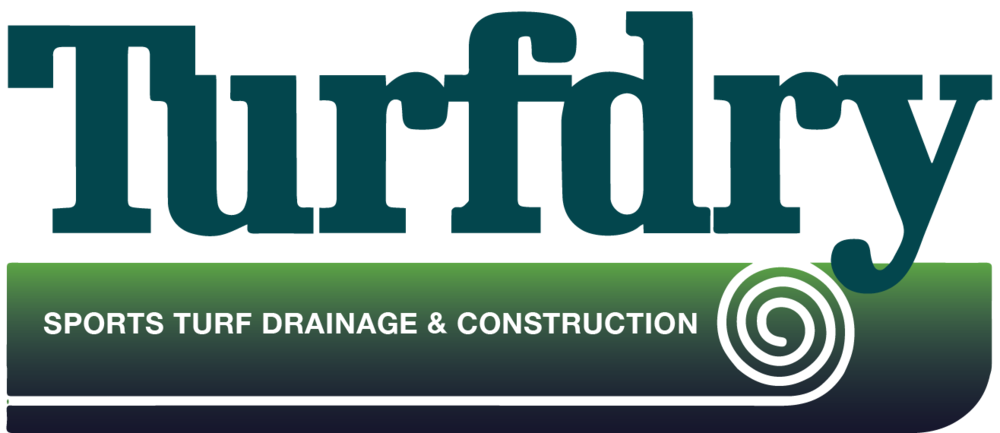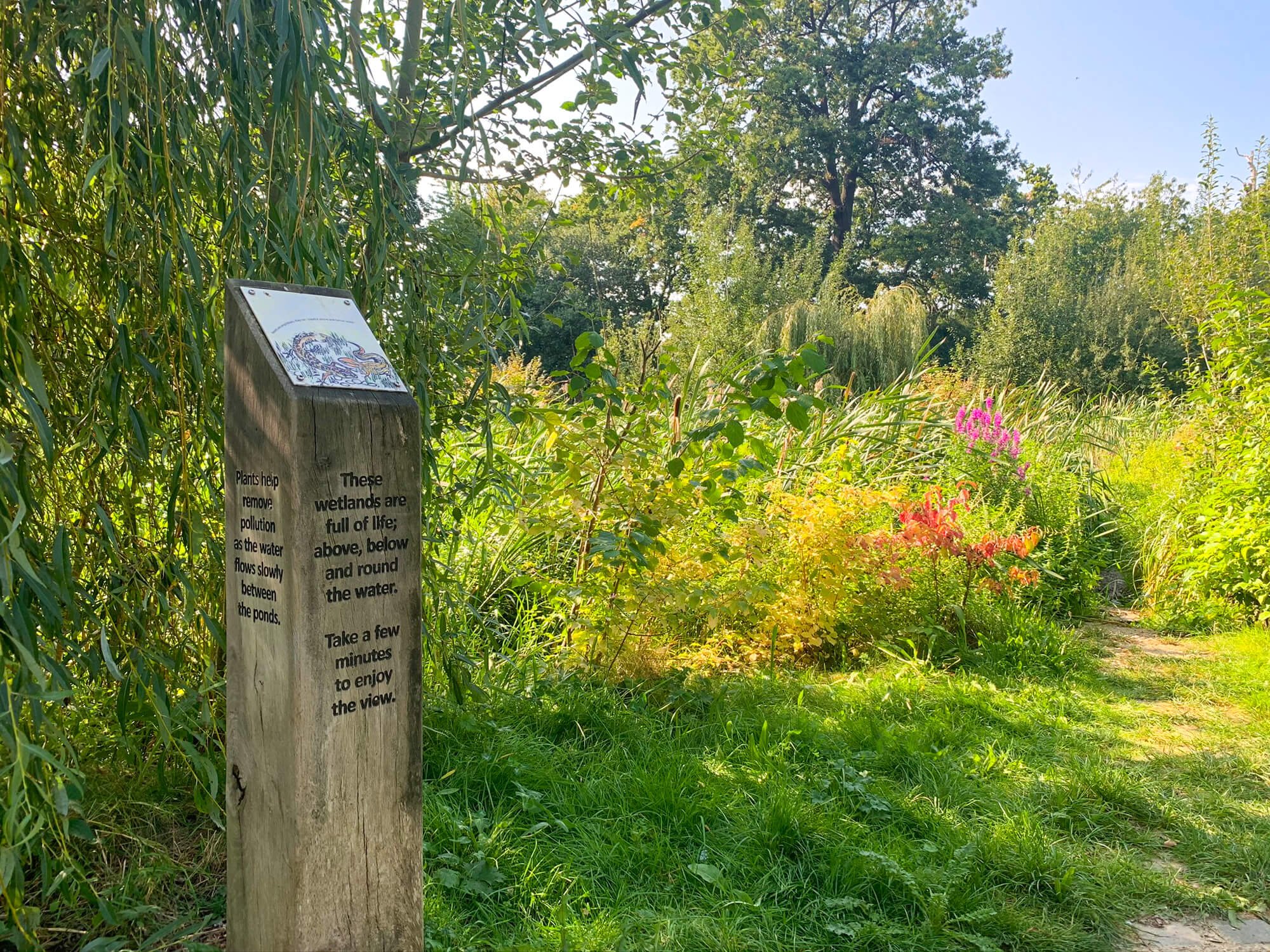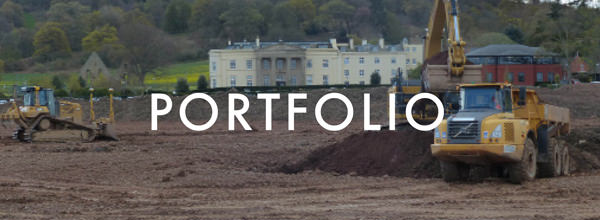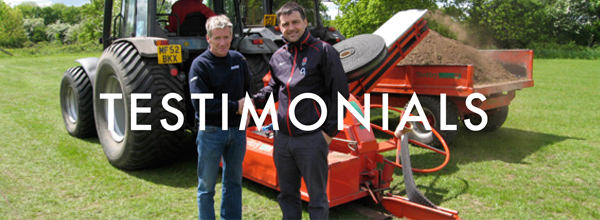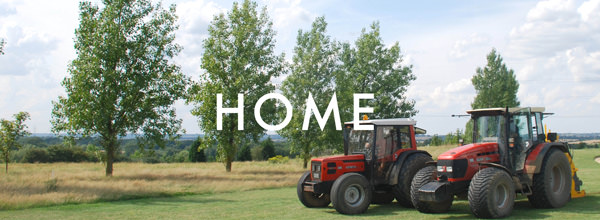PORTFOLIO - OTHER PROJECTS - Pymmes Park Wetlands Construction
Pymmes Park
Wetlands Construction
Following the tremendous success of Turfdry's work at Firs Farm Park in Enfield in 2014 - which saw the restoration of a watercourse that had previously been diverted underground, and the construction of a flood barrier - Turfdry was again contracted by Enfield Council, this time to construct wetlands at Pymmes Park, Edmonton.
Working in conjunction with the council, Turfdry helped design a scheme whereby material excavated to form the proposed wetlands cells was used to construct a raised bund that will become a wild-flower meadow.
The topsoil layer of the proposed wetlands cells' footprints is stripped by an excavator. The 3D model for the wetlands' design is fed to the GPS equipped laser-control system onboard the excavator, allowing for optimal accuracy of construction.
Excavated material from each section of the site was transported to its stockpiling location via pre-approved paths, whilst fencing was erected to maximise the area of the park that remained open and accessible, whilst ensuring the health & safety of all parties remained safeguarded.
Excavated material generated by the wetlands construction was used to create a bund to be later seeded with wildflowers.
The construction levels are checked to confirm accuracy during a break in construction of the largest wetland cell.
The new wetlands were designed to complement and blend in to the park's existing water features, with the path pictured now to have water and wildlife on either side.
Completed excavation of the two largest wetlands cells at Pymmes Park.
Whilst the works progressed smoothly, they were complicated by efforts to preserve the natural world. Certain trees in the park are of particular significance, and the logistics of the operation were shaped in such a way that machinery did not track over their roots; additionally, one particularly fine fir tree was moved from the site of the wetlands to elsewhere in the park.
The preservation of history, as well as nature, had a bearing on this project, as excavation works unearthed what appeared to be a small air raid shelter. A team of archeologists worked in conjunction with Turfdry for a number of days, revealing what was in fact quite a large communal air raid shelter that had likely been constructed just before World War II, for use by those in the park at the time of attack, as well as local residents. After recordings had been made, the majority of the shelter materials were buried beneath the wild-flower meadow, bar one wall, which was left for posterity.
Archaeologists work at uncovering and recording remains of WWII bomb shelter, uncovered during the excavation of the new wetlands cells at Pymmes Park.
The bunker was discovered to extend a considerable way across the site, with its far wall being seen here.
As part of the environmentally-conscious spirit of the project, particular trees that fell within the footprint of the proposed wetlands cells - such as the one pictured here - were removed and re-planted elsewhere in the park.
Excavated material being transported to stockpiling location via machinery tracking routes, were pre-planned to avoid damaging the root structures of any protected trees, such as the one pictured here.
The wetlands flora was provided and planted through a community charity initiative.
The largest wetlands at Pymmes Park, shown following planting.
With all excavation and re-levelling works completed, planting has taken place in the wetlands, which should flourish and provide good coverage within 12 months. This will not only add further aesthetic value to the park, but also provide a rich habitat for plants and animals.
To complement the planting, additional features have been added to the wetlands - such as these decorative and stepping stones in the centre of the two largest cells.
The wetlands - pictured here 16 months after completion of the project - have flourished since construction, forming a rich natural environment for flora and fauna alike.
The wide variety of flora that has established in the wetlands cells offer rich natural beauty to the local residents and park users.
Subsequent visits to the park have revealed a rich and diverse array of plant-life now populating the wetlands, reducing water pollution, as well as providing a home for a wide number of animals and birds.
The western entrance to Pymmes Park now provides visitors views of abundant wetland plants.
“Plants help remove pollution as the water flows slowly between the ponds. These wetlands are full of life; above, below and round the water.”
The view from the paths through the wetland shows abundant plant life, diversifying the ecological profile of the park.
In the years since the construction’s completion, the wetlands have become the home for a tremendous variety of plant life, greatly adding to the aesthetic beauty of the park.
Although it provides a distinct natural environment, the now matured wetland blends seamlessly into the broader park.
Project Summary |
Services Provided by Turfdry
AddressEnfield Council |
